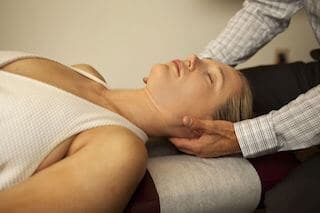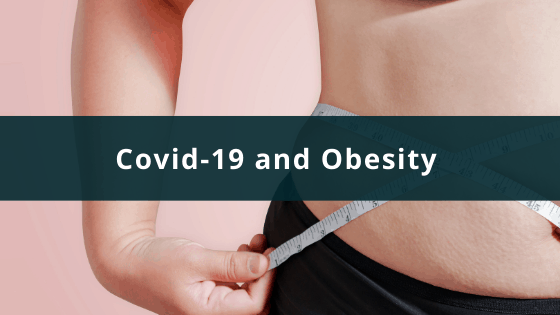Interview With Dr. Stephen LaScala On Soft Tissue
by Dr. Andrew Pugliese
I am currently adding in other professionals on my blog to get the word out about health and fitness and the importance of that in today’s society. Today we are featuring Dr. Stephen LaScala, DC at 1st Choice Sports Rehab Center, LLC. While most of us are not professional athletes, many of us do work out regularly or are weekend warriors just trying to maintain some semblance of health and well-being. Dr. LaScala has been helping me out for many years with my neck and other problem areas. He is a walking testament to fitness and healthy living and I am pleased to be including him on my blog.
Thank you, Steve, for taking time out of your busy schedule to grant this interview.
Question #1: Most people think of traditional back-crackers when they hear the word Chiropractor. You are so much more than that. Can you please tell us a little bit about yourself and the type of work you do?
Sure! I am a graduate of Life University and completed my undergraduate work at the University of Georgia. I am an FDM instructor (fascial distortion model), certified in medical acupuncture from McMaster’s University in Ontario, Canada, a former ART instructor (active release technique) for 12 years, certified in biomechanics, certified in therapeutic modalities such as Shockwave, Graston and cold laser.
I am, also, thoroughly versed in bodybuilding, powerlifting, and am a tri-athlete. I played all four years in high school football, baseball, basketball and track, and field.
I have 15 years experience, 10 years with professional football, baseball, basketball, Olympians, as well as college and high school athletes.
I have come to the conclusion over my 15-year career that soft tissue work is by far the most beneficial and valuable type of therapy applied in nonsurgical issues.
I am able to apply the proper technique to the associated injury relative to their sport to maximize the fastest results, as well as, give strength conditioning to enhance recovery and facilitate a stronger athlete.
Question #2: Wow, so you are not only a Doctor but a well-rounded athlete, too. So how long have you been involved with bodybuilding and what got you started in that?
I started doing bodybuilding and competing back in college in the mid-1980’s, and have done it ever since, but haven’t competed since 1990. The way I got started was because of my brother. He was on a college football scholarship, worked out a lot, and when he came home, he was huge! I was in high school at the time. He came in, patted me on the back and said, “Damn, Steve! You are bony!” I have worked out ever since.
Fortunately, I have some genetic gifts that allow me to develop muscle. I was asked at my peak to go Pro, but didn’t, due to the overwhelming use of steroids at the time. It was too dangerous and I didn’t want to be a part of that.
Question #3: As a long-term athlete, you are able to understand injuries better than someone who is a non-athlete. What injuries have you sustained that make you uniquely qualified to help other athletes?
Yes, as an athlete, I have had so many injuries that have covered every area of my body. I have had 2 shoulder surgeries, ACL and meniscus surgery, sprained ankles, elbows, fingers, wrists, as well as, low back injuries and neck injuries.
Being an athlete with all these injuries has helped me better understand the physiology behind the biomechanics of these injuries relative to treating them more precisely.
Question #4: You said earlier that soft tissue work is better than other modalities. Why do you feel soft tissue work is better?
Hard tissue only supports the soft tissue. Soft tissue is doing all the work and is what is actually injured 90% of the time in sports injuries. Muscles move us around, but soft tissue is actually doing all the real work. Fix the soft tissue, and you are back in the game!
Question #5: Tell me about some of the athletes you have helped. What injuries did they have and what did you do to help them?
Probably the most common injury to a position player in the NFL is a pulled hamstring. The right kind of soft tissue work, aligning the tissue back into normal fascial planes, then realigning the muscle fibers so they are linear with each other again, will help the injury heal properly. This is the most important concept, basically setting up the environment to heal at its strongest level.
Question #6: So about these injuries. Is it from a lack of blood flow in the fascial planes or is it due to other factors?
Different injuries create different pressures and tension on the issue. RCS (repetitive cycle syndrome), doing the same motion over and over, causes tissue to get overloaded. Lactic acid floods the tissue and inhibits circulation to bring in good nutrients. This causes tissue breakdown, leading to injury.
Question #7: How long can it take for an injury to fully heal using soft tissue work?
It really depends on the severity of the injury. A Grade 1 tissue injury could take only one treatment, but usually takes 3-5 treatments, which can take a week or two. If it is a Grade 2 injury, it can take 2-3 weeks to heal. Most injuries are Grade 1, which won’t go away on their own and inhibit or stop performance.
Question #8: What can a person do to avoid these types of injuries? Is there something we are doing wrong? What is the best course of action to get good nutrients to the tissue?
The best prevention is proper hydration and eating good food consistently. This means you should be eating every 3 hours and not every 6, 8 or 10. When you eat inconsistently, your body begins to cannibalize itself for fuel and repair. It also drives up Cortisol levels that lead to tissue destruction.
But sleep could be the most important thing of all. Getting 7-8 hours per night is key. Most people live on 6 or fewer hours, which is stressful on the body.
Stretching is also important, and I’m not just talking about for 10 seconds or just when you are hurt. You should foam roll, which is very effective at breaking up knots created from training.
You should also get monthly tissue work done by a professional like myself. Even if you aren’t having issues at the moment, I can detect tissue distortions that haven’t fully developed and clean them up, preventing setbacks.
Question #9: You said we should eat every 3 hours. What type of food are we talking about here?
Good lean protein, vegetables, good fats and a little carbohydrate. An athlete should take in 1G of protein per pound of body weight. Grilled or baked fish, organic turkey or chicken, grass-fed beef are all good sources of protein. Go heavy on the dark green leafy veggies like kale and spinach. A small sweet potato is a good carb. Avocados and nuts are good fats.
Question #10: You also said sleep was very important. As a certified Sleep Specialist, I know this to be true, as most of us do not get enough sleep. So let’s say you had a bad night’s sleep. Should you skip your workout/training the next day or should you try to push through?
If you have had 3 hours of sleep and an intense workout is scheduled, my opinion is either do a recovery workout (a shorter, less intense workout), or just take the day off. On that day off, fuel up, hydrate and get some sleep. Your entire system will benefit in so many ways.
Well, thank you, Steve, for your input. I will be inviting you back for another spot in the near future to talk more about proper nutrition and how to achieve that in today’s busy world.
Looking forward to it! And if the any of your readers have any sports-related injuries, they can check us out online at www.1stchoicesportsrehab.com.
1st Choice Sports Rehab Center, LLC
2545 Lawrenceville Hwy #100 Decatur, GA 30033
(404) 377-0011







